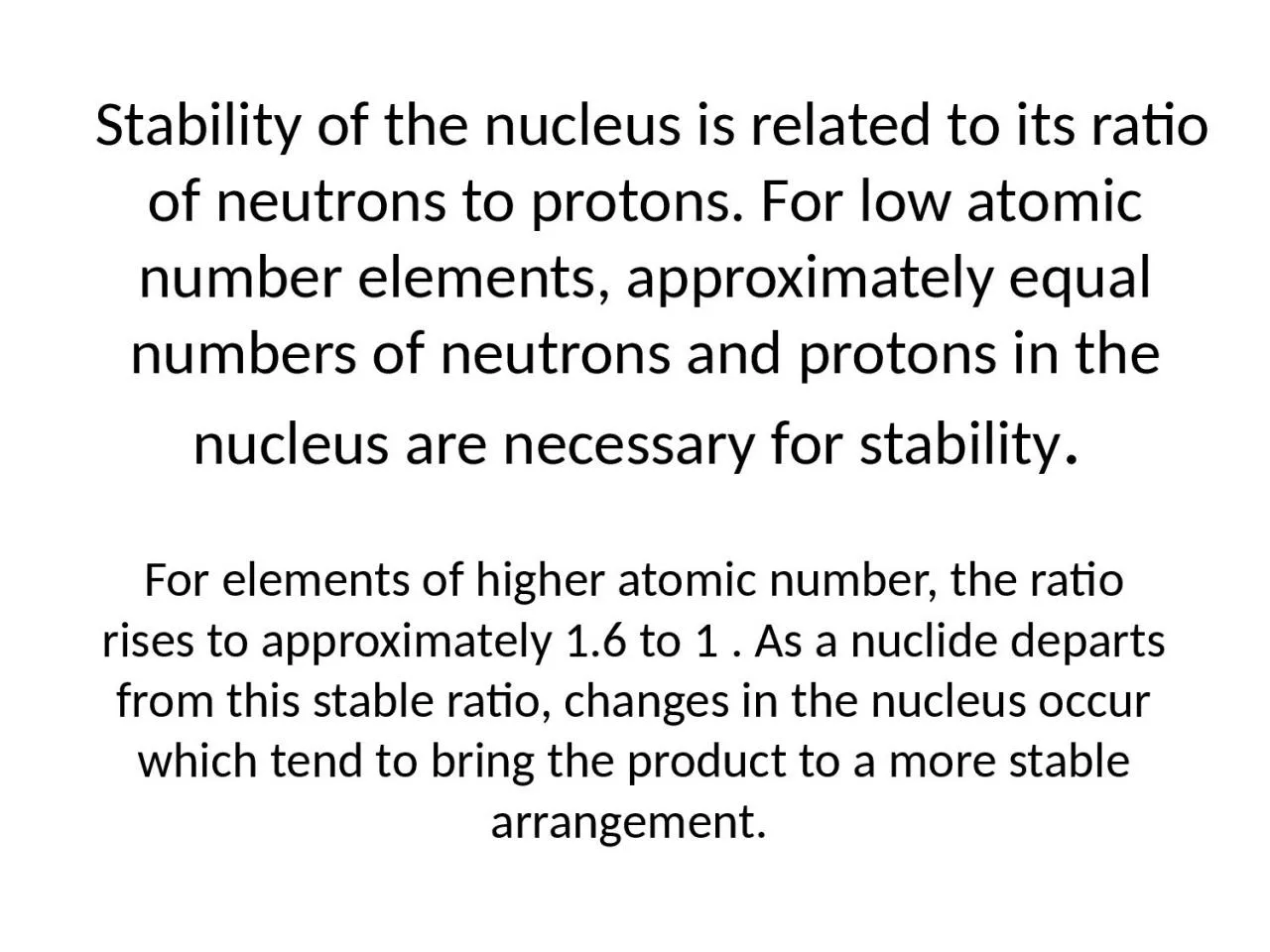

For elements of higher atomic number the ratio rises to approximately 16 to 1 As a nuclide departs from this stable ratio changes in the nucleus occur which tend to bring the product to a more stable arrangement ID: 998006
Download Presentation The PPT/PDF document "Stability of the nucleus is related to i..." is the property of its rightful owner. Permission is granted to download and print the materials on this web site for personal, non-commercial use only, and to display it on your personal computer provided you do not modify the materials and that you retain all copyright notices contained in the materials. By downloading content from our website, you accept the terms of this agreement.
1. Stability of the nucleus is related to its ratio of neutrons to protons. For low atomic number elements, approximately equal numbers of neutrons and protons in the nucleus are necessary for stability. For elements of higher atomic number, the ratio rises to approximately 1.6 to 1 . As a nuclide departs from this stable ratio, changes in the nucleus occur which tend to bring the product to a more stable arrangement.
2. RADIOACTIVE DECAY Beta Decay When the neutron to proton ratio is too high, a neutron "transforms" into a proton and electron, with the electron being ejected from the nucleus. The ejected electron is called a "beta particle".
3. Beta particles are not emitted with a single energy but are emitted with a spectrum of energies up to some maximum value. This is due to a division of the total energy of each disintegration between the beta particle and a neutrino, which is another particle that is emitted at the same time as the beta particle. The neutrino has a negligibly small mass and no charge, and it carries off varying amounts of the released energy.
4. It therefore travels great distances, losing little energy in nearby materials and causing no biological damage. Beta particles are high- energy, high- speed electrons or positrons emitted by certain types of radioactive nuclei